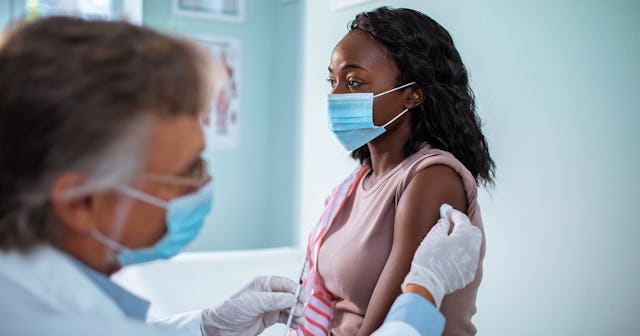Serious COVID Cases On The Rise In Younger Adults

NPR reports hospitals are filled with ‘younger, sicker’ people
While more Americans receive the COVID vaccine, the hospitalization rates of patients with severe COVID-19 have increased in recent weeks in Americans under 50, especially younger adults.
NPR reports that doctors are tending to patients in a much different demographic group than at the beginning of the pandemic. The media outlet explains the number of young and middle-aged adults who have contracted serious cases of the virus has risen in hospitals across the country.
Most messaging (both media and healthcare professionals) have been centered on protecting the elderly from the virus. The newer infection rate in the younger demographic is a bit of a double-edged sword for the medical community: safeguarding the elderly works, yet somehow, younger Americans might see the vaccine as a sign that they can ease public health protocols.
Some took to Twitter to urge younger Americans to think again.
Adults under the age of 50 have the highest rate of hospitalization for COVID-19, NPR’s reporting claims — about 35 percent of all hospital admissions. For Americans over the age of 50, the total number of hospitalizations is about 31 percent, which places them in the second-highest category. Conversely, the hospitalization rate for adults over 65 have dropped off.
In a bit of good news, around 30 percent of the U.S. population is considered fully vaccinated (a designation that occurs two weeks after the patient’s final dose of the vaccine). The ones with full vaccination rates are mostly over 65, a group that was first in line to get the vaccine in many states.
The virus is still causing serious disease across the country, although precautionary measures meant to curb the spread of COVID have been removed in many states.
In addition, the increase of COVID-19 by younger patients has alarmed doctors throughout the country, as hospitals are crowded with hundreds of sicker patients than during the earlier wave of the pandemic.
All three vaccines available in the U.S. provide good protection against variants, including the more contagious U.K. strain (otherwise referred to as the B.1.1.7 variant).
A recent study seems to indicate that the B.1.1.7 variant doesn’t lead to more profound illness, as was initially assumed. However, patients diagnosed with the strain appear to be more likely to have more of the virus in their bodies than those with the previously dominant strain, which may help explain why it propagates more easily.
Health researchers and doctors anticipate that the sharp rise in hospitalizations across the younger demographic will only last for a short period of time. As the vaccination efforts expand nationally, the higher rate of immunizations are expected to counteract this trend.
COVID-19 vaccination became available to all adults in mid-April, though some states had made the doses available to pockets of their populations earlier.
The national polls indicate a sizable portion of teens and adults age 20 to 30 don’t necessarily plan to get vaccinated. These polls force some communities to get creative about incentivizing the vaccine.
The Biden administration announced plans to increase the messaging surrounding COVID vaccinations, with funds specifically earmarked to bolster outreach in communities where citizens might be reluctant to receive the shot.